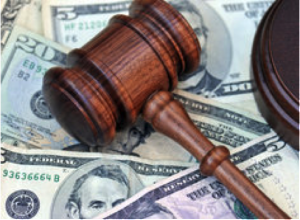 If you have been injured as a result of someone else’s negligent conduct, you may be considering a lawsuit to recover compensation. The compensation awarded to you, called “damages,” falls within two categories: compensatory damages and punitive damages. Compensatory damages are designed to compensate the plaintiff for actual losses sustained, and are further divided into “special damages” and “general damages.”
If you have been injured as a result of someone else’s negligent conduct, you may be considering a lawsuit to recover compensation. The compensation awarded to you, called “damages,” falls within two categories: compensatory damages and punitive damages. Compensatory damages are designed to compensate the plaintiff for actual losses sustained, and are further divided into “special damages” and “general damages.”
Special damages are those fixed amounts relating to your actual losses, such as medical expenses, lost income or costs to repair your property. General damages, on the other hand, include non-monetary losses, such as “pain and suffering”, your decreased ability to perform certain functions, or the loss of a loved one. Punitive damages, sometimes called exemplary damages, are designed to punish a defendant or deter similar conduct in the future.
The damages to which you are entitled are typically calculated based on the severity of your injuries, the underlying circumstances of the incident in question, and whether the case settles or proceeds to a trial. The following factors are typically considered:
- Medical treatment expenses
- Estimated costs of future medical treatment or therapy
- Past lost wages or income
- Future lost wages or income
- Costs to repair or replace damaged property
- Your out-of-pocket expenses, such as insurance deductibles or copayments
- Rental car expenses
- Funeral expenses, in wrongful death cases
- Emotional distress
- Pain and suffering
- Punitive damages, if the underlying act was particularly egregious or intentional
In the American legal system, damages are intended to compensate the plaintiff sufficiently to make him or her “whole,” i.e. restore the plaintiff to the same position he or she was in prior to the accident or injury. If you mediate your dispute or otherwise settle it out of court, the parties and lawyers will negotiate each item and come to an agreement. If your case is tried in a court, the judge or jury will calculate how much you are entitled to receive, based on the evidence presented at trial.

 If you have been injured by the negligent actions of another, you may be entitled to compensation for your medical expenses, physical and emotional pain and suffering, permanent physical impairment or disfigurement, lost income, decreased earning capacity, property damage, or other economic losses. Deciding whether to settle a personal injury lawsuit without taking the case to trial is a major decision demanding the full consideration of many factors.
If you have been injured by the negligent actions of another, you may be entitled to compensation for your medical expenses, physical and emotional pain and suffering, permanent physical impairment or disfigurement, lost income, decreased earning capacity, property damage, or other economic losses. Deciding whether to settle a personal injury lawsuit without taking the case to trial is a major decision demanding the full consideration of many factors. Hint: When You’re Injured, Your Relationship with Your Insurer Changes
Hint: When You’re Injured, Your Relationship with Your Insurer Changes In order to prevail in a personal injury case, you must be able to prove that your injuries were directly caused by the negligent actions of another. If you can prove that your injuries were at least partly caused by another, you may be able to receive compensation for your medical expenses, physical and emotional pain and suffering, permanent physical impairment or disfigurement, lost income, decreased earning capacity, property damage, or other economic losses.
In order to prevail in a personal injury case, you must be able to prove that your injuries were directly caused by the negligent actions of another. If you can prove that your injuries were at least partly caused by another, you may be able to receive compensation for your medical expenses, physical and emotional pain and suffering, permanent physical impairment or disfigurement, lost income, decreased earning capacity, property damage, or other economic losses. If you have been involved in an automobile accident, you may be seriously injured and not even realize it. At least, not immediately. Serious injury can occur even in slow or low-impact collisions, and accidents which cause no damage to the vehicle. For example, accident victims can suffer from “whiplash” in collisions involving a sudden change in vehicle speed of just 2.5 miles per hour.
If you have been involved in an automobile accident, you may be seriously injured and not even realize it. At least, not immediately. Serious injury can occur even in slow or low-impact collisions, and accidents which cause no damage to the vehicle. For example, accident victims can suffer from “whiplash” in collisions involving a sudden change in vehicle speed of just 2.5 miles per hour. There are many potential missteps after you have been involved in an auto accident. In the minutes, hours and days following a car wreck, it can be difficult to think clearly or to take note of important factors involving liability and compensation. Even if your injuries are minor and your vehicle is not damaged, you should follow these guidelines to protect yourself and preserve your right to compensation for your injuries, vehicle damage or lost income. Often times, your damages are more serious than they appear at first glance.
There are many potential missteps after you have been involved in an auto accident. In the minutes, hours and days following a car wreck, it can be difficult to think clearly or to take note of important factors involving liability and compensation. Even if your injuries are minor and your vehicle is not damaged, you should follow these guidelines to protect yourself and preserve your right to compensation for your injuries, vehicle damage or lost income. Often times, your damages are more serious than they appear at first glance. Importance of Credible Accident Reconstruction Testimony
Importance of Credible Accident Reconstruction Testimony